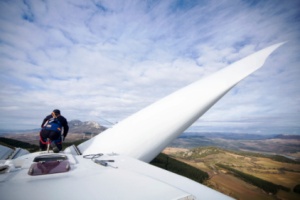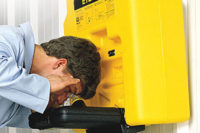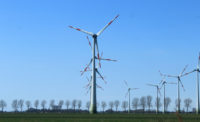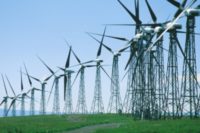 Wind turbines vary in height, but can be more than 100 feet tall. Exposure to high winds may make work at high elevations even more hazardous. OSHA has different fall protection requirements for construction (installation of towers) and general industry (maintenance).
Wind turbines vary in height, but can be more than 100 feet tall. Exposure to high winds may make work at high elevations even more hazardous. OSHA has different fall protection requirements for construction (installation of towers) and general industry (maintenance).
During installation, workers may need to access individual turbine sections to weld/fit individual sections together, run electrical or other lines, and install/test equipment - often at heights greater than 100 feet. Construction workers on wind farms when exposed to fall distances of 6 feet or more must be protected from falls by using one of the following methods:
• Guardrail Systems
• Safety net Systems
• Personal fall arrest systems
Maintenance work involving wind turbines is generally considered to fall under OSHA’s general industry standards. Such workers when exposed to fall hazards of 4 feet or more must be protected by a standard railing. If such a railing is not possible then the workers must be protected from falls through the use of personal protective equipment such as a personal fall arrest system or a safety net.
Additionally, general industry workers engaged in maintenance of the wind turbines may have to climb up the turbine towers using fixed ladders. While climbing a fixed ladder (exceeding 20 feet in length) on these towers, a ladder equipped with a cage, well or ladder safety device must have a landing platform every 30 feet; a ladder not so equipped must have a landing platform every 20 feet.
Some additional resources on fall protection are provided below:
• QuickCard on Fall Protection
• Hazards and Possible Solutions
For further information on fall hazards, OSHA’s Fall Protection pages for General and Maritime industries and Construction Industry should be consulted.
Wind farm maintenance a risky business



